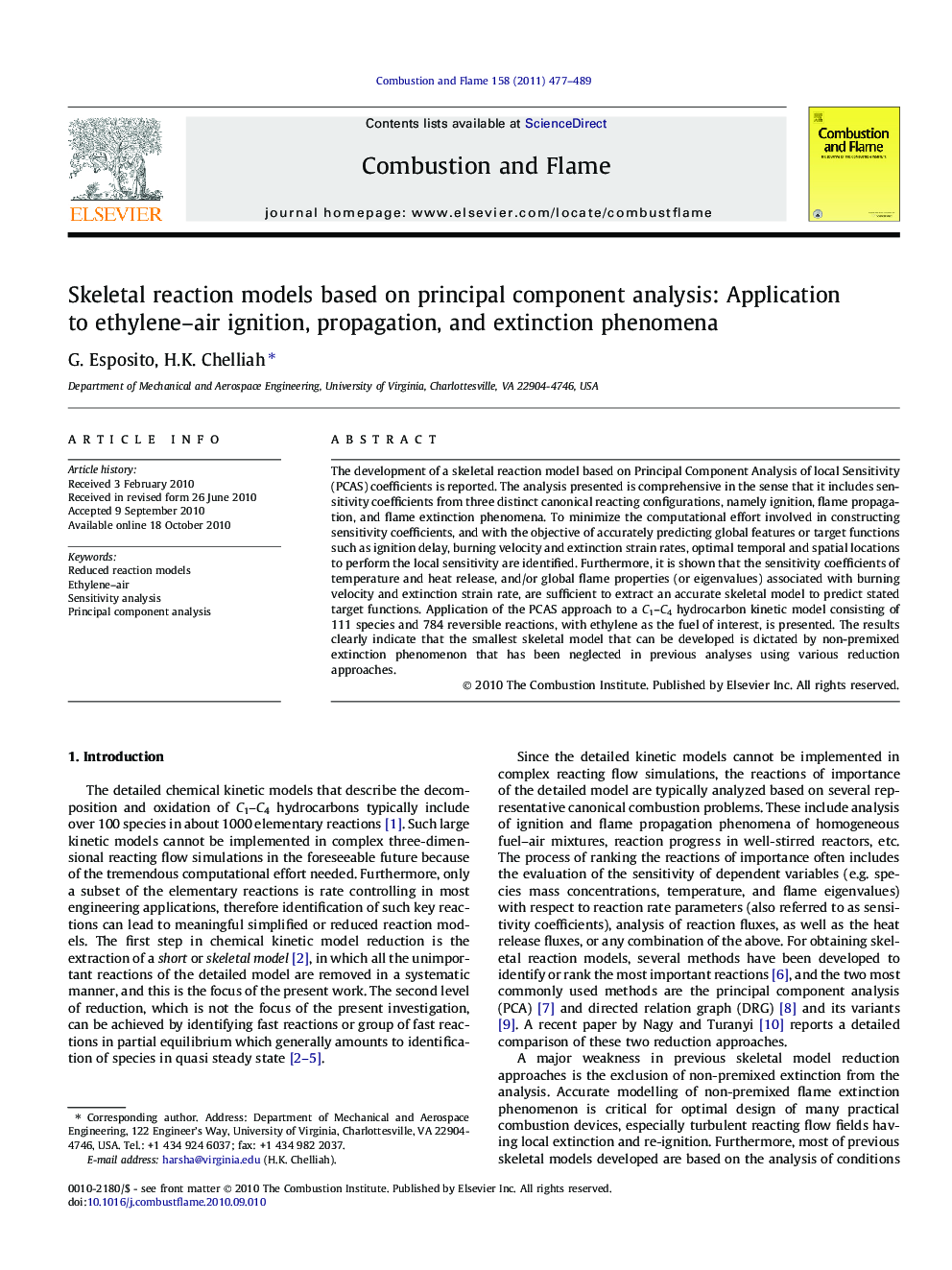| Article ID | Journal | Published Year | Pages | File Type |
|---|---|---|---|---|
| 169226 | Combustion and Flame | 2011 | 13 Pages |
The development of a skeletal reaction model based on Principal Component Analysis of local Sensitivity (PCAS) coefficients is reported. The analysis presented is comprehensive in the sense that it includes sensitivity coefficients from three distinct canonical reacting configurations, namely ignition, flame propagation, and flame extinction phenomena. To minimize the computational effort involved in constructing sensitivity coefficients, and with the objective of accurately predicting global features or target functions such as ignition delay, burning velocity and extinction strain rates, optimal temporal and spatial locations to perform the local sensitivity are identified. Furthermore, it is shown that the sensitivity coefficients of temperature and heat release, and/or global flame properties (or eigenvalues) associated with burning velocity and extinction strain rate, are sufficient to extract an accurate skeletal model to predict stated target functions. Application of the PCAS approach to a C1–C4 hydrocarbon kinetic model consisting of 111 species and 784 reversible reactions, with ethylene as the fuel of interest, is presented. The results clearly indicate that the smallest skeletal model that can be developed is dictated by non-premixed extinction phenomenon that has been neglected in previous analyses using various reduction approaches.
